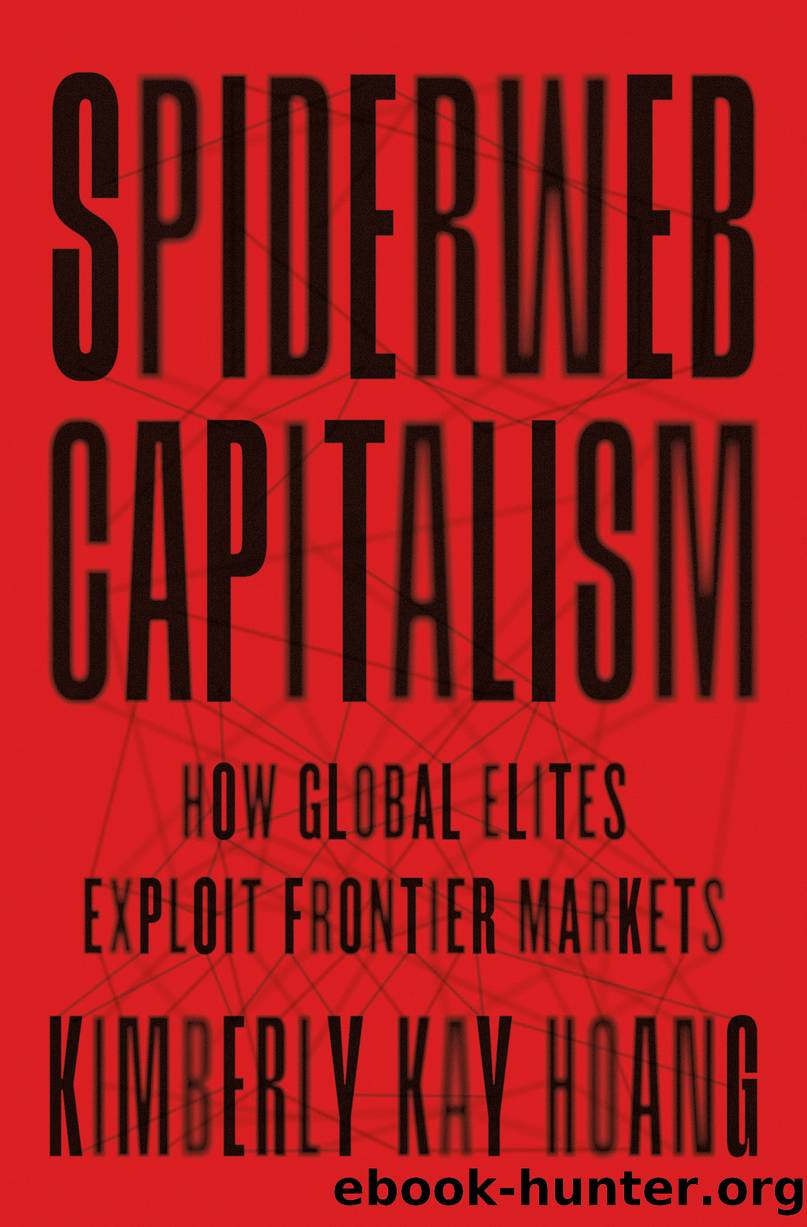Spiderweb Capitalism by Kimberly Kay Hoang

Author:Kimberly Kay Hoang
Language: eng
Format: epub
Publisher: Princeton University Press
Published: 2022-06-29T00:00:00+00:00
However, a pool of eager foreign investors looking to expand into new frontiers was only half the battle. Onshore, they needed to find ways to convince reluctant local firms to have honest conversations with foreign investors. This meant that local firms would have to get their businesses to a place where they were comfortable not only sharing their books, but also setting in place a clear set of strategies for paying income and commercial taxes.
In a context where internal financing is challenging for local firms with ambitions for large-scale growth, local companies must weigh the costs and benefits of adopting a new shareholder structure. Foreign partners bring with them a web of experts and relationships crucial for helping their local partners set up offshore structures that are critical to take advantage of tax laws across multiple sovereignties. In transitioning from prevailing tax evasion strategies to ones of avoidance, foreign investors and their local partners undergo an intimate process that involves a great deal of relational work to get on the same page.6 Anurak explained the challenges at this stage: âWe realize that you canât force a five-year-old child to become a mature eighteen-year-old. We are comfortable working in the gray and dealing with the complex family arrangements.â
At the same time, Anurak explained, the added value that they bring is the specialized skills to set up proper [corporate] governance structures at an international level. This was important because it enabled their local partners to expand their networks and build important international relationships to optimize finance and manufacturing operations. They do this by putting a plan into place that increases revenues slowly over time, so that local firms are tax compliant. âYou canât go from claiming losses every year to then showing profits of $1 million. That is just asking for an audit!â he explained.
What Anurak was describing was a certain level of cultural familiarity and comfort with investing the time to build relationships of trust with their local partners. It was much easier for him to understand a family-run business with a board structure that mixed family business with the professional sphere. Indeed, this phase involves the greatest growing pains. In the process of professionalization, the risk is syndicated between multiple parties: the local firm, the foreign investor, and the auditing firm that helps with deal advisory to be tax compliant. This is the riskiest stage of investment for any foreign investor, because it involves a great deal of uncertainty, between the ways different bureaucrats interpret the law and the relational work required to establish trust with the local partner.
For Clarence, an investor from Singapore, the goal was to form joint ventures with local firms and help them undergo the process of professionalization to exit to an investor with an even larger ticket size. In their contracts with their local partners, foreign partners often set up contracts with key targets, and if the local firm did not meet those key targets, they would progressively lose more and more control over the firm.
Download
This site does not store any files on its server. We only index and link to content provided by other sites. Please contact the content providers to delete copyright contents if any and email us, we'll remove relevant links or contents immediately.
The Pirates of Somalia by Jay Bahadur(1587)
Political Theology by Carl Schmitt(1544)
The Holocaust: A New History by Laurence Rees(1488)
The Social Animal by David Brooks(1411)
A Practical Guide to International Arbitration in London by Hilary Heilbron(1396)
Restitution by Restitution(1394)
Pirates of Somalia by Jay Bahadur(1348)
Coercing Virtue by Robert H. Bork(1323)
The Nuremberg Interviews by Leon Goldensohn(1274)
Basic International Corporate Taxation by Sebastiano Garufi(1176)
A History Of Thailand by Baker Chris(1153)
International Trade and Business: Law, Policy and Ethics by Gabriël Moens & Peter Gillies(1108)
The Global Commons by Susan J. Buck(1106)
Asian Waters by Humphrey Hawksley(1094)
Blood Profits by Vanessa Neumann(1088)
The Sovereignty of Human Rights by Macklem Patrick(1076)
Spring Fever: The Illusion of Islamic Democracy by McCarthy Andrew C(1076)
The Nuremberg Trials: The Nazis and their Crimes Against Humanity by Roland Paul(1022)
Crimes Against Humanity: Historical Evolution and Contemporary Application by M. Cherif Bassiouni(997)
